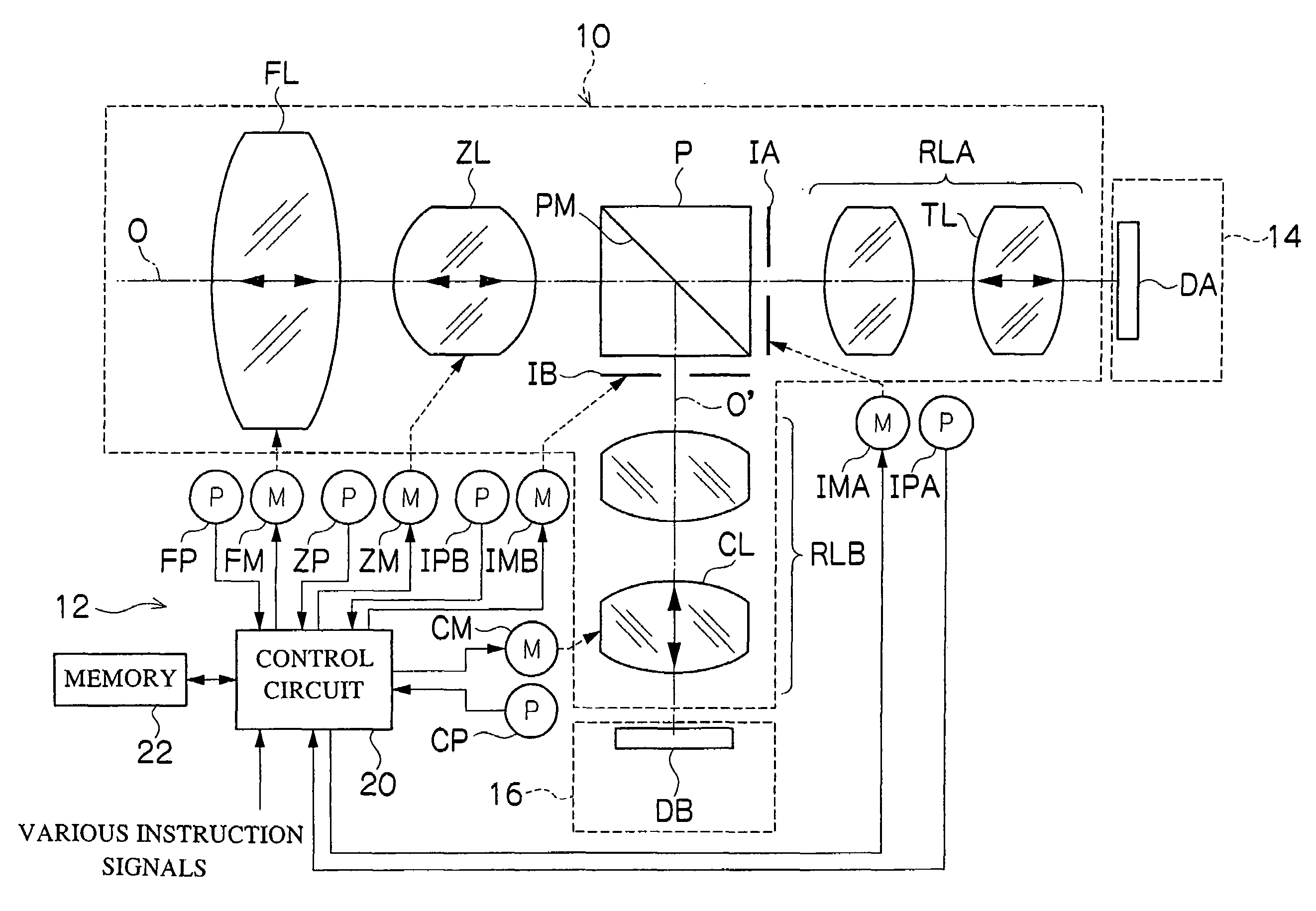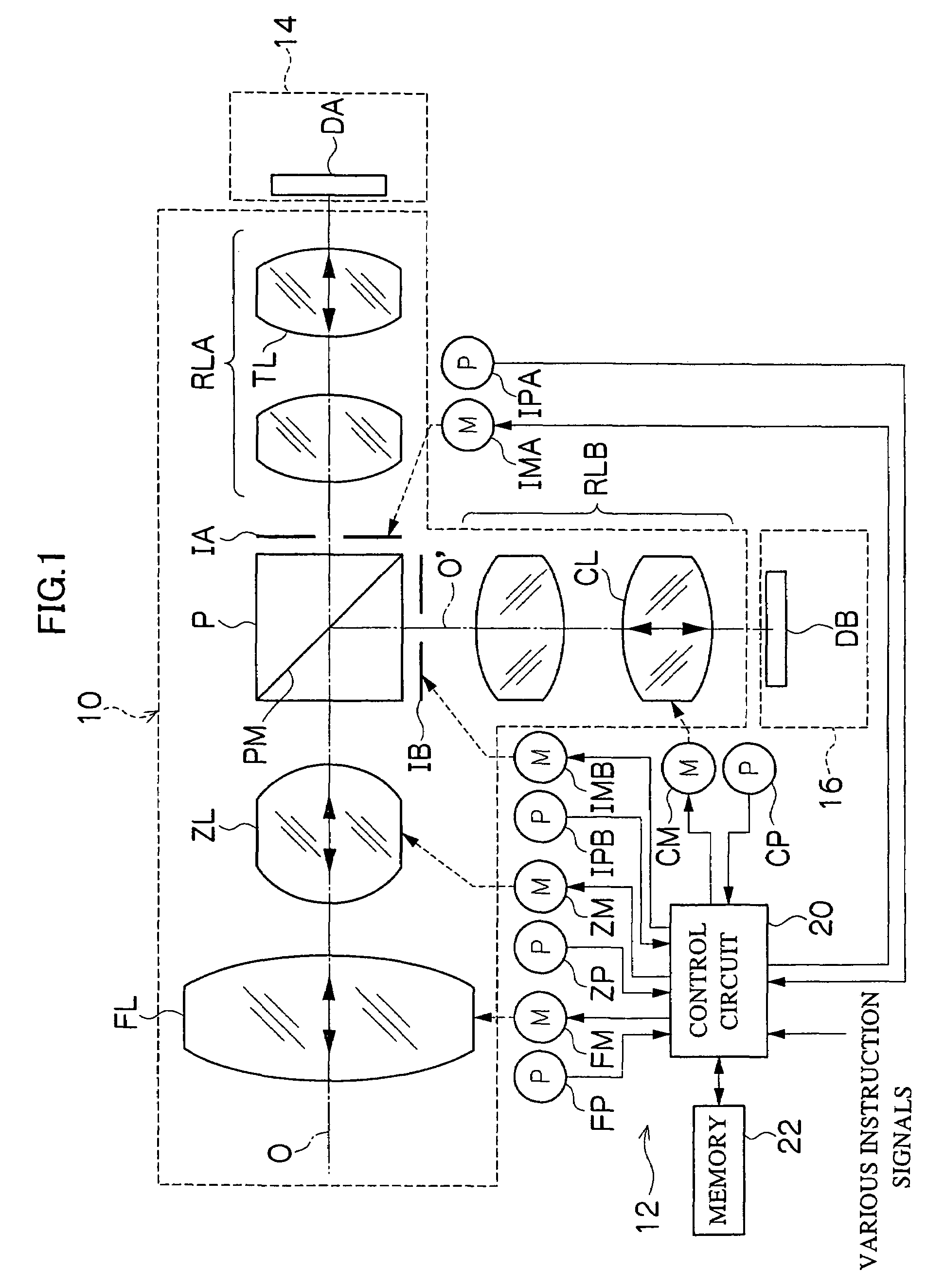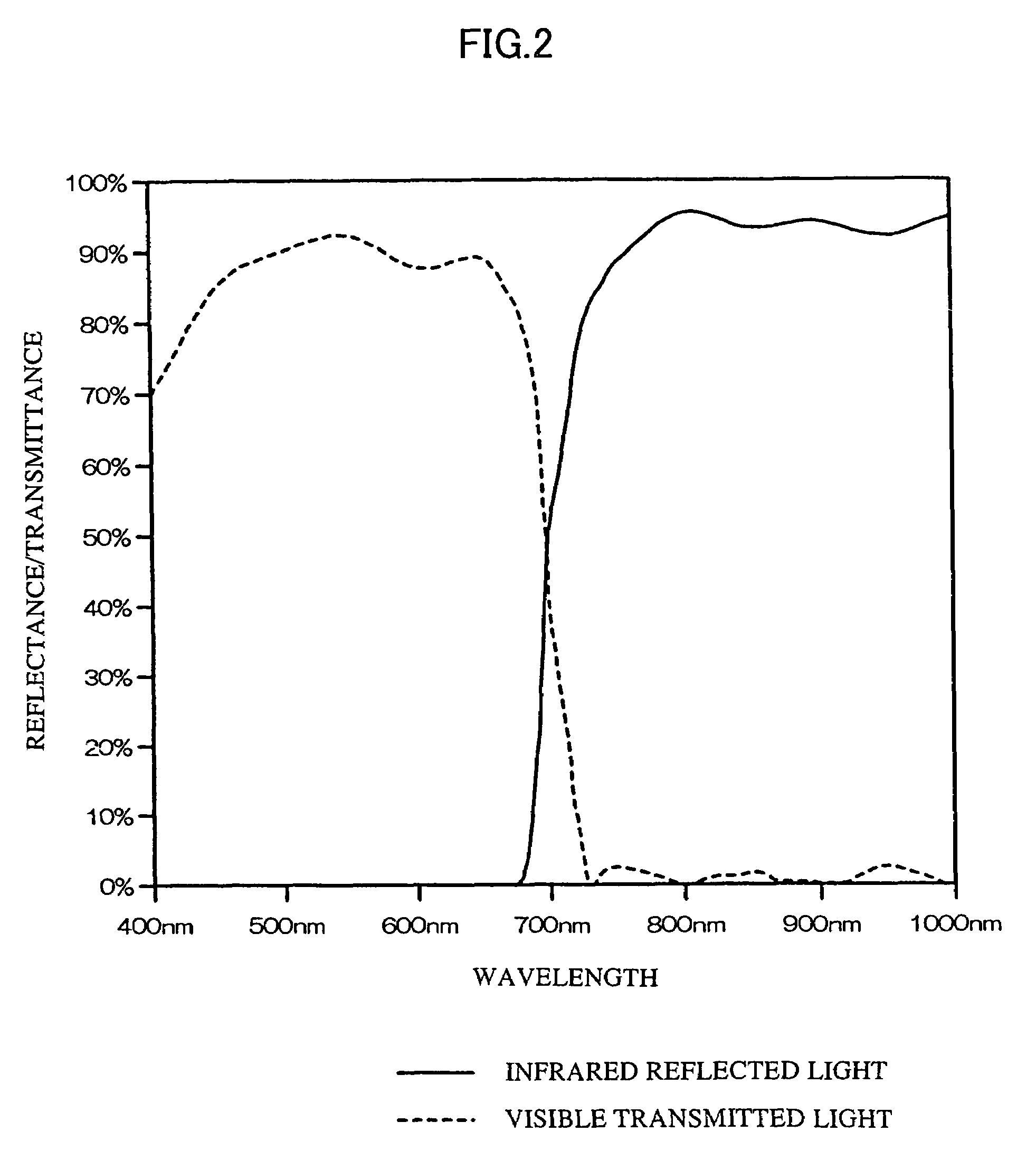Visible and infrared light photographing lens system
a technology of infrared light and photographing lens, which is applied in the field of visible and infrared light photographing lens system, can solve the problems of inability to compensate for any difference in photographing distance between visible light and visible light, disadvantageous uniform distance, etc., and achieves the effect of avoiding causing the photographer much trouble, reducing costs, and increasing the size of the system and cos
- Summary
- Abstract
- Description
- Claims
- Application Information
AI Technical Summary
Benefits of technology
Problems solved by technology
Method used
Image
Examples
Embodiment Construction
[0030]With reference to the accompanying drawings, description will be given below of preferred embodiments of a visible and infrared light photographing lens system according to the present invention.
[0031]FIG. 1 is a view showing the general configuration of a lens system to which the present invention is applied. The lens system in this figure is used in a monitoring television camera or the like. It can photograph the same object simultaneously with a visible light and an infrared (near infrared) light. As shown in FIG. 1, the present lens system comprises a lens device composed of an optical system (photographing lens) 10 and a control system 12, a visible light camera main body 14 in which an image pickup element (CCD) DA picking up an image of an object using an object light in a visible light wavelength region (visible light region) is mounted, and an infrared light camera main body 16 in which an image pickup element (CCD) DB picking up an image of an object using an object...
PUM
 Login to View More
Login to View More Abstract
Description
Claims
Application Information
 Login to View More
Login to View More - R&D
- Intellectual Property
- Life Sciences
- Materials
- Tech Scout
- Unparalleled Data Quality
- Higher Quality Content
- 60% Fewer Hallucinations
Browse by: Latest US Patents, China's latest patents, Technical Efficacy Thesaurus, Application Domain, Technology Topic, Popular Technical Reports.
© 2025 PatSnap. All rights reserved.Legal|Privacy policy|Modern Slavery Act Transparency Statement|Sitemap|About US| Contact US: help@patsnap.com



